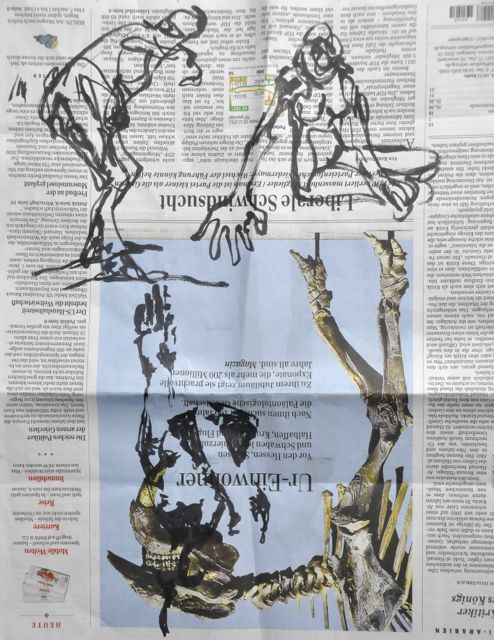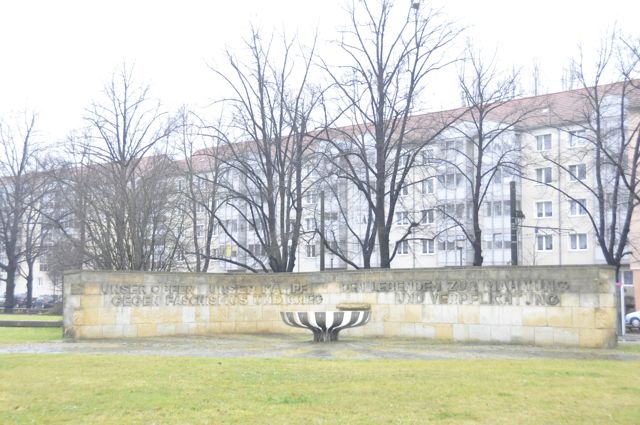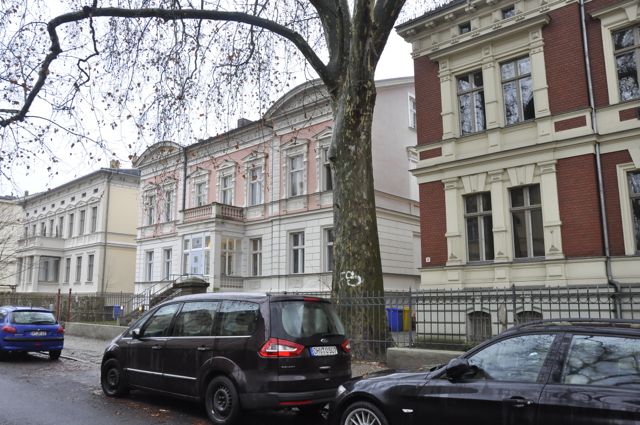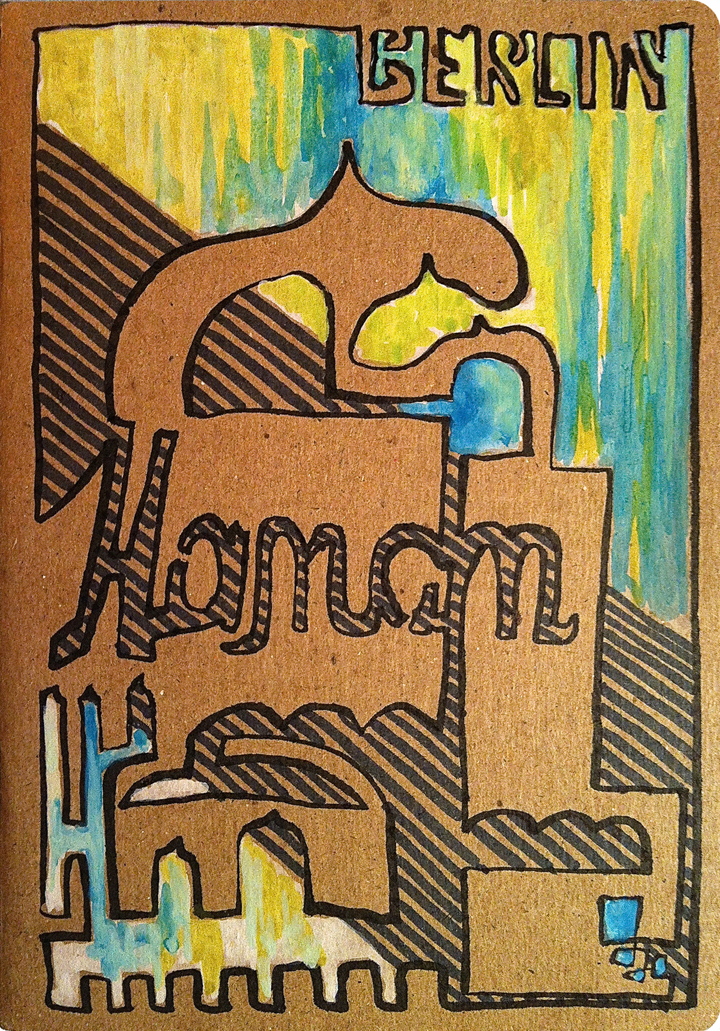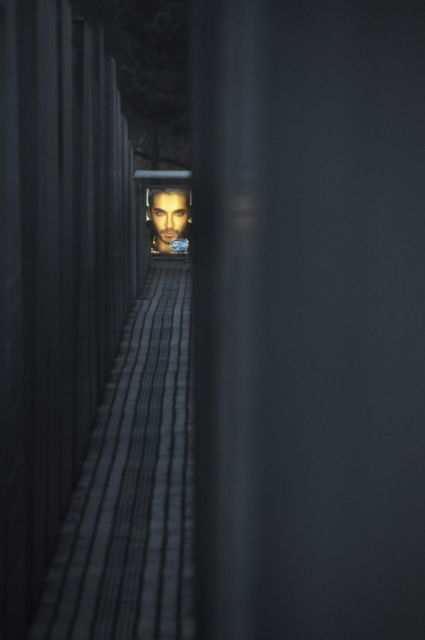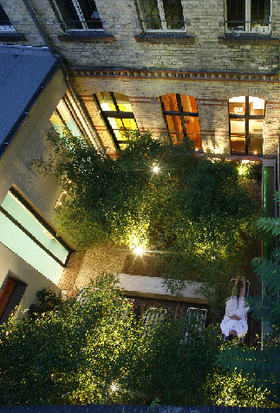
The 1884 Leipziger Baumwollspinnerei / cotton mill has been converted to artist studios and galleries starting in the late 1990s with the official opening of several famous galleries in 2005 catapulting this “art factory” into the art establishment.
This is the reason why I came to Leipzig: to catch the twice-annual Open House on January 12 at the Baumwollspinnerei. I had read about this former cotton mill in East Germany which had been shut down a while after German reunification. Gradually, it had become home to artist studios and eventually, galleries. Some world-famous artists of the Leipzig School of Art, who are former East Germans and have become known for processing their socialist background in their art, have their studios here. For example, the artist couple Neo Rauch and Rosa Loy, and Tilo Baumgärtel.
I had purposely booked a cheap hotel within a 20-minute walk of the cotton mill studios, so I wouldn’t have to deal with public transit on the day of the Open House, and could get there in a reasonable time frame by foot.

Leipzig-Plagwitz train station signage. I like the old-fashioned type face.
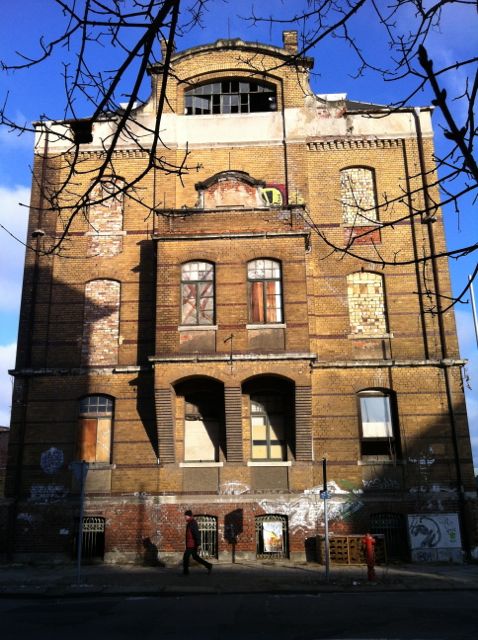
January 12 was a beautiful sunny day. It bears mentioning, because there have been so few sunny days in Berlin. I wanted to make sure to get to the cotton mill by 11 a.m. when the tour opened so I wouldn’t miss a minute. 11 a.m. does not sound that hard to make, but when you’re me, that can be an early time. I walked by some pictoresquely decrepit buildings on my way through Leipzig-Plagnitz.

You can purchase a run-down building here. I have no idea for how much, but the real question is, how much is it going to cost you to fix it up?

Already-reno’d next to yet-to-be-reno’d buildings in Leipzig-Plagwitz. At least you get a nice before-after comparision.

Still on my morning walk to my destination.

The text above the door frame says something about a metal workers’ union place.
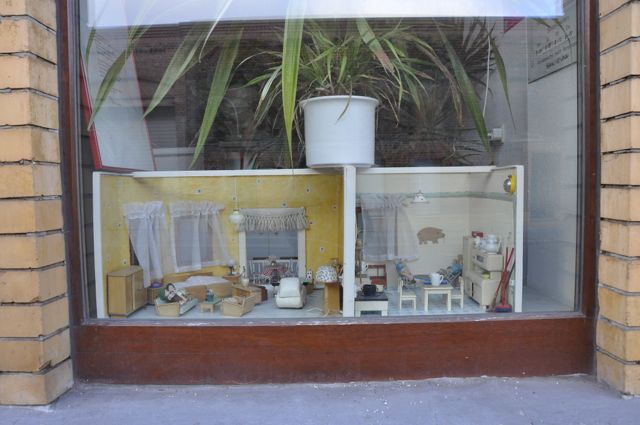
A dentist office window on my walk. I keep seeing miniatures or doll houses in shop windows. That may have been a popular thing in the former East Germany.
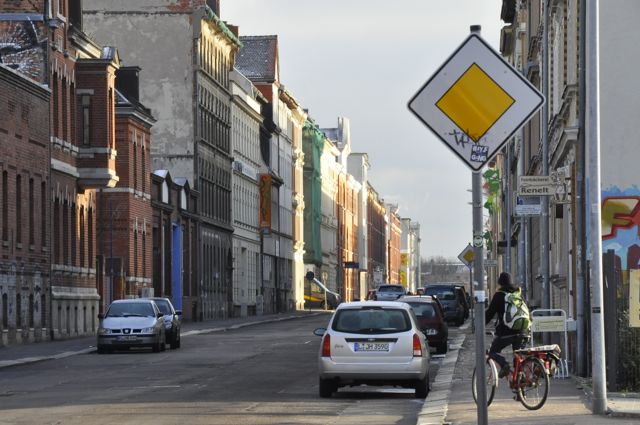
Leipzig-Plagwitz street scene. I liked how non-commercial it looked here. And there were quite a few young people around on bikes. Student dive area for sure. I just have to be clear: I very much liked Leipzig, because it looked so non-commercial in many areas.

I am not sure what the point of these barrels was, except maybe to make a point about the hazards of radioactive waste storage.
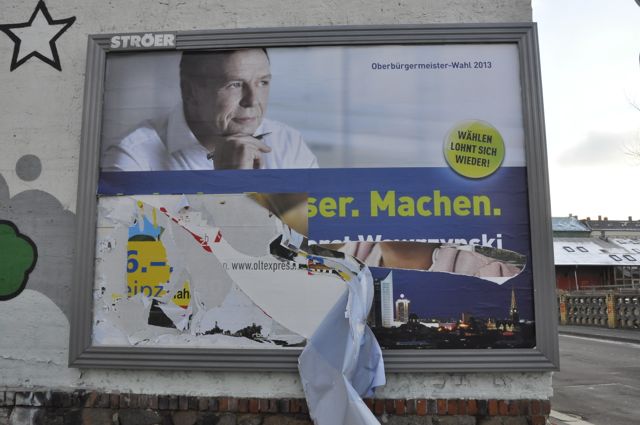
A poster for a Mayor-General election of Leipzig in 2013. I like the random rippings.
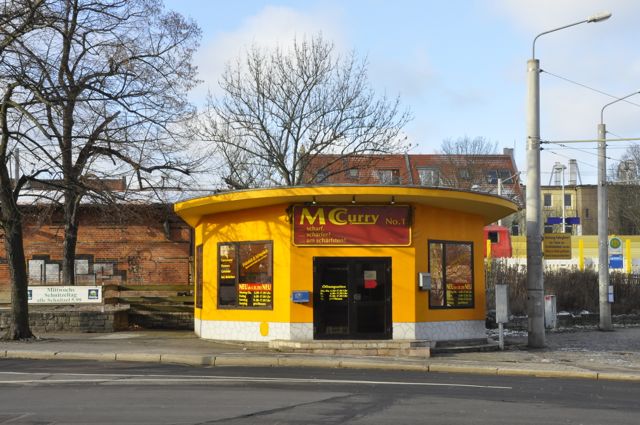
Germans like curry, whether it’s on their sausages or on actual Indian food.

My first glimpse of the outer buildings on one end of the Leipzig cotton mill artist studios. I was thrilled to be here.

It gradually filled up with people in the courtyards and pathways of the cotton mill. Some outside food booths were set up with hot Russian cabbage stew (“soljanka”), sausages, hot tea, and glühwein.
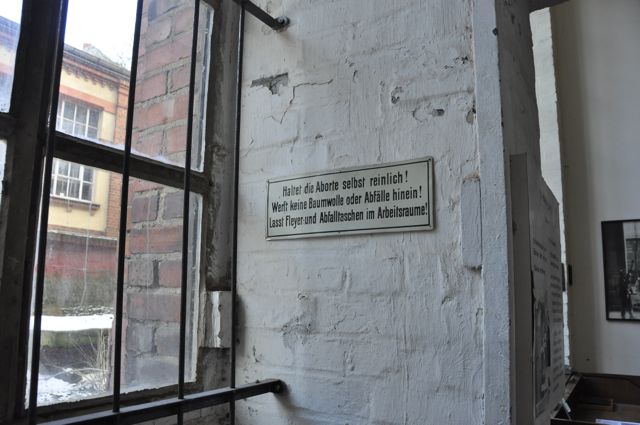
At the visitor centre in the Leipziger Baumwollspinnerei, there is a one-room exhibit of paraphernalia of the former industry, cotton textile production, which took place here.

Old spindles at the Leipzig cotton mill.

Windows of artist studios at the Leipziger Baumwollspinnerei.

Art Nouveau style factory door at the Leipziger Baumwollspinnerei.

Wayfinding typography at the Leipziger Baumwollspinnerei.

A building at the Leipziger Baumwollspinnerei.

I met an interesting artist couple who have their studio at the Spinnerei, Torsten and Isolde Russ at their exhibit and we chatted for a long time. I liked both of their work and bought one of Torsten’s books about his one-line drawings, and Isolde showed me a fantastic sketchbook she had created with cutouts, which reminded me of what I had just done for the Sketchbook Project.

Isolde Russ, artist. I enjoyed meeting this artist couple.

Torsten Russ, artist
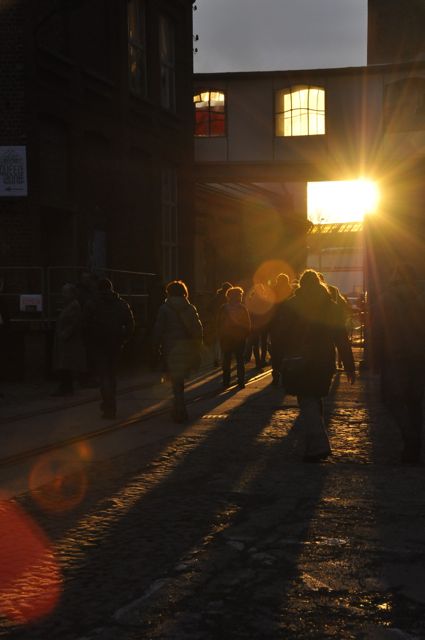
Sunset at the cotton mill studios.

More of the sunset.

In one of the stairways in one of the many artist buildings inside the Leipziger Baumwollspinnerei.

In one of the hallways in an artist building inside the Leipziger Baumwollspinnerei.

While the spaces look a bit rough, but just right for mucking with paint and art supplies, the plumbing and bathroom facilities have all been recently modernized. They have toilets that you just wave at to flush them. I guess a big wave means you went big.

Some random spray paint remnants from some artist on the wall here.

A large empty space which could possibly be used for exhibitions, surrounded by studios in just one of the many artist buildings. Such luxury of space.

Windows in one of the smaller studios that are set aside for promising young artists.
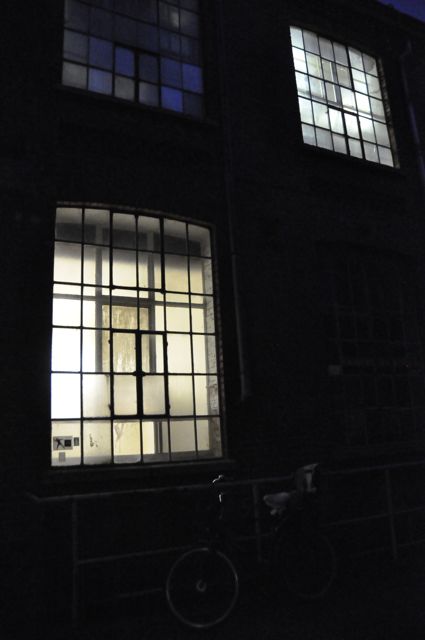
I was drawn to the artist studio windows, wondering what happens behind all of them, and enjoying their glow.

I met this graphic artist, Katja Zwirnmann, in her studio and shop at the Leipzig cotton mill, and had a chat about graphic design with her. She was a genuinely nice person and I liked her work very much, which consists of offset, screen-printed or handprinted illustrations and designs. She also binds books with hand-printed covers.

I said good-bye to the Leipzig cotton mill studios around 6 pm because I was getting cold and congested and decided to look for a warm place to have a warm meal in downtown Leipzig. I had a wonderful 7 hours here at the cotton mill.

After my full day of art viewing at the cotton mill studios, I took the bus to downtown Leipzig to look for some evening entertainment and a meal. During my quest, I walked by this cool lamp in an office building lobby.

In the evening, I went to a comedy cabaret “Der gemeine Sachse”, a satire about Saxons. I ended up at a table with a family group of 8 Saxons and felt like a bit of an intruder, but they were nice enough. The cabaret was not as funny as I’d hoped, or maybe I don’t get the Saxons’ humour, or maybe I no longer get German humour. But really, it just wasn’t that funny. There were too many canned, tired, old jokes (as in “three Saxons go to heaven…”), and too little bite for my taste. But the dinner theatre venue was nice, and I was able to get food and drink there, and overall it was preferable to spending the evening in my drab hotel room.

There was a satiric painting of Angela Merkel at the Cabarett Leipzig which I thought was great. They must have modelled her busty look after an infamous photo of her in a very low-cut evening gown.















